Note: Except where noted otherwise, all images on this website © 2018-2021 by Brian Cudnik and Prairie View A&M Physics. All rights reserved.
Also note: The next planetary transit of any kind visible from our part of the world (Texas, USA) will not happen until May 7, 2049. For more information on Mercury transits, check out this page. A similar page describes the transits of Venus, the next of which will not be visible from anywhere on Earth until December 2117.
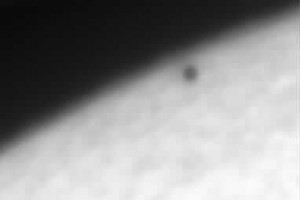 |
Image by Brian Cudnik with the Prairie View Solar Observatory’s 35-cm solar telescope, Nov. 15, 1999. |
Transit of Mercury November 11, 2019
On Monday morning, November 11, 2019 the most recent transit of Mercury across the Sun’s disk happened. The planet spent over 5 – 1/2 hours silhouetted against the Sun’s disk. The transit was visible, at least in part, across North and South America, Europe, Africa, the Middle East, and Antarctica. For Prairie View, Texas (located an hour’s drive west-northwest of Houston, Texas), the Sun rose with Mercury already in transit; local sunrise happened at 6:46 am (12:46 UT). Greatest transit occurred at 15:19:47.7 UT (9:19 am) with the center of Mercury 75.9 arc seconds from the center of the Sun’s disk. More information about this transit can be obtained at the “EclipseWise” website. This was the last transit of Mercury visible anywhere on Earth until 2032, and the last transit visible from Texas until 2049 May 7.
We had planned to open up the Observatory for public viewing but the weather did not cooperate, with overcast skies all day. However, I was able to make use of a small break in clouds that I noticed from my office a little after 11 am local time. I set up the portable 4.5-inch reflector with white light solar filter and imaged the sun afocally with a smartphone. The two images are actually one and the same, taken during about 30 seconds that I was able to view the event in total through a single break in cloud. The first is a full image, taken at 17:37:06 UT. 11 November 2019. The second is a close up section of the first image, emphasizing Mercury’s disk.
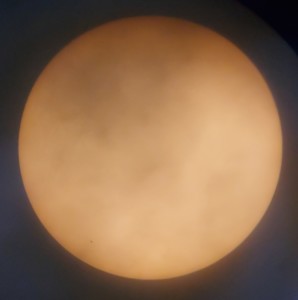 |
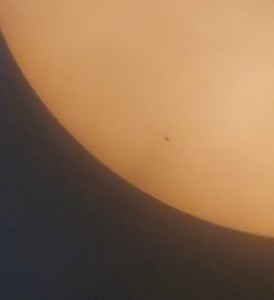 |
Transit of Mercury May 9, 2016
The last time Mercury crossed the Sun’s disk, we observed it from the PVAMU campus . Weather prospects were not very good so the setup to observe this was limited to a white-light solar filter equipped 4.5-inch reflector and eyepiece. Images were made afocally via smartphone. A total of 18 persons were treated to the view over the course of the day, during several short sessions which coincided with breaks in the cloud deck. This transit of Mercury was the first such event (of Mercury) in 10 years and the first planetary transit of any kind since the Venus transit of June 6, 2012. For lots more information about this event, visit http://eclipsewise.com/oh/tm2016.html.
Images from this event are presented below.
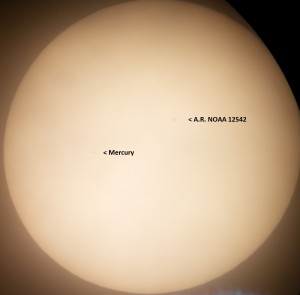 |
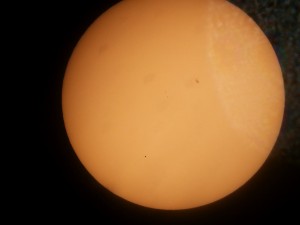 |
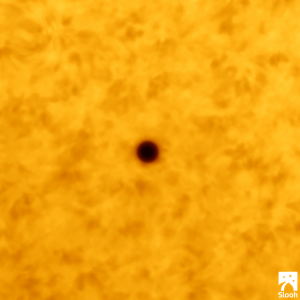 |
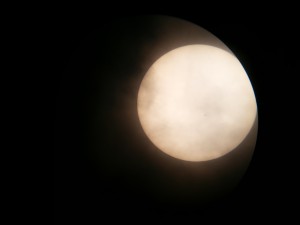 |
